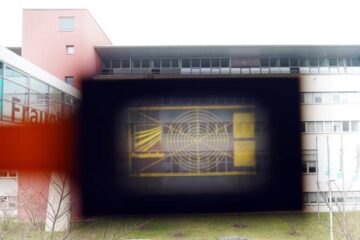Where man boldly goes, bacteria follow -are we contaminating space?

“Wherever man boldly goes his microbial fauna is sure to follow,” said Lewis Dartnell, an astrobiologist at University College London. The Russian space station Mir was launched in 1986 and microbial studies investigated the diversity of bacteria living alongside the astronauts.
In 1998, free-floating blobs of water found during a NASA mission to the station were analyzed and discovered to contain microbes including faecal bacteria like E. coli, plague bacterium-related species of Yersinia, and even what was suspected to be Legionella, as well as fungi, amoebae and protozoa.
“Preventing the spread of microbial life between worlds of the solar system has been a top priority for decades now,” said Lewis. “This effort is known as planetary protection.” Today's International Space Station (ISS) is much cleaner than Mir was 20 years ago, thanks to HEPA filters, weekly cleaning and biweekly disinfecting regimes. But inevitably, the ISS is still far from being bug-free; recent sampling revealed the bacterium Staphylococcus epidermidis surviving in different areas.
But it's not just planets we need to protect – astronauts are at increased risk of infection in space. Respiratory infections are common among astronauts and diseases occur in a quarter of space shuttle flights. “Prolonged exposure to cosmic radiation and microgravity is believed to have a negative effect on the immune system, and disease transmission is enhanced within the closed environment of recycled air and water,” said Lewis Dartnell. Microbes also pose an increased risk of allergies, toxic air and water supply and even biodegradation of critical spacecraft components.
This week, the Phoenix lander touched down on Mars, hoping to take the first ever direct measurements of Martian water and organic molecules. “To guarantee the cleanliness of the robotic arm, it was enclosed in a biobarrier bag – effectively an interplanetary condom,” said Lewis. But this will not be a feasible control measure for humans. “Humans and spaceships are inherently dirty and once we arrive to plant flags in the rusty soil our microbial entourage will begin leaking out onto Mars.” What's more, microbes have an uncanny ability to survive as spores, resistant to heat, cold and radiation. “Once humans have visited Mars, we may never be certain that any biological discoveries weren't simply signs of our own dirty sleeves,” said Lewis Dartnell.
In fact, we might actually need to take microbes on a manned mission to Mars. “For longer missions, it will not be possible to take sufficient supplies from Earth,” said Lewis. “Scientists are developing ingenious life support systems relying on plants and micro-organisms to provide food, waste recycling and water purification.” Of course, in this case, an outbreak of harmful microbes could crash life support systems as well as affecting the health of the crew, endangering the whole mission. “For better or worse, space bugs are here to stay.”
Media Contact
All latest news from the category: Life Sciences and Chemistry
Articles and reports from the Life Sciences and chemistry area deal with applied and basic research into modern biology, chemistry and human medicine.
Valuable information can be found on a range of life sciences fields including bacteriology, biochemistry, bionics, bioinformatics, biophysics, biotechnology, genetics, geobotany, human biology, marine biology, microbiology, molecular biology, cellular biology, zoology, bioinorganic chemistry, microchemistry and environmental chemistry.
Newest articles

Advanced Brain Science Without Coding Expertise
Researchers at Helmholtz Munich and the LMU University Hospital Munich introduce DELiVR, offering a new AI-based approach to the complex task of brain cell mapping. The deep learning tool democratizes…

Transparent emissive microdisplays
… for ultra-light and compact augmented reality systems. As part of the HOT project (High-performance transparent and flexible microelectronics for photonic and optical applications), scientists from the Fraunhofer Institute for…

Bringing bio-inspired robots to life
Nebraska researcher Eric Markvicka gets NSF CAREER Award to pursue manufacture of novel materials for soft robotics and stretchable electronics. Engineers are increasingly eager to develop robots that mimic the…





















